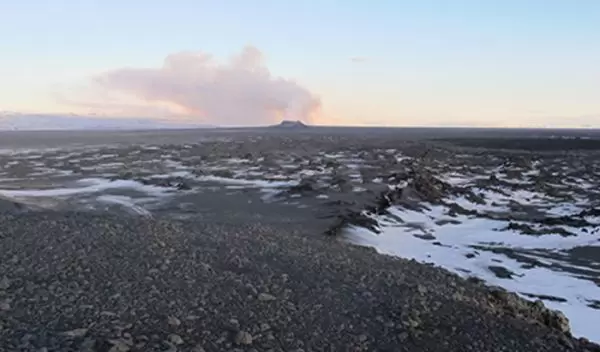
As tectonic plates pull apart, what drives the formation of rifts?
At the boundaries between tectonic plates, narrow rifts can form as Earth's crust slowly pulls apart. But how, exactly, does this rifting happen?
Does pressure from magma rising from belowground force the land apart? Or is a rift just a rip, created mainly by the pulling motion of tectonic plates that are drifting away from each other?
A study published in the journal Geology explores these questions and sheds new light on how this process works.
Past research has pointed to magma as a key driver in rifting events. But the new findings highlight that "rift processes do not have to operate identically across the entire globe," says lead scientist Stephan Kolzenburg at the University at Buffalo.
The U.S. National Science Foundation-supported study found that a trenchlike structure called a rift-graben opened in 2014 in Iceland near what is now known as the Holuhraun lava field, in a region that straddles the tectonic boundary between the North American and Eurasian plates. A graben forms when a chunk of land sags downward as the land on both sides of it moves away, creating a chasm called a rift.
The team concluded that in this case, the slow drift of tectonic plates, and not pressure from a magma chamber along the rift, was the driver.
The graben formed within a period of a few days, and then, "it just stayed like that, and it didn't care about anything else that happened in the magmatic plumbing system," Kolzenburg says. "The graben was remarkably stable even though lots of dynamic processes were happening underneath, such as pressure changes in the magmatic feeder system of the eruption."
Magma leaked through the rift once it was open, but that magma didn't appear to be the main force behind the initial creation of the rift, Kolzenburg says.
The study benefited from the work of an international group of scientists who had been closely monitoring Holuhraun and the surrounding region, documenting seismic activity and the volume of magma emerging during a period of unrest from 2014-15. Kolzenburg's team compared this information to digital elevation models that detailed how the area's topography changed over time, capturing the graben's sudden appearance and tracking the landscape for nearly five years after the graben's formation.
The findings apply specifically to the graben the team studied. In other rift zones, different dynamics may be at play, including in the Afar Region of Ethiopia, where magma is believed to play a more important role in driving rift formation, Kolzenburg says.


